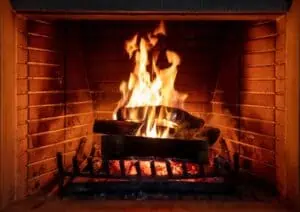How to Start a Fire in a Fireplace?
There are several steps to starting a fire in a fireplace. The first step is to make sure that there is enough wood for the fire. You should also keep the damper open. Then, add a few logs at a time. You can use tinder to ignite the fire.
(For a gas fireplace repair services, contact us today!)

tinder is a fire starter
Using tinder is a great way to start a fire. Using this method, you do not have to worry about the fireplace being out of fuel because the tinder will catch the spark and ignite. It will also hold the flame until the kindling catches fire.
Proper wood for a fireplace
The best way to start a fire in a fireplace is by using the right kind of wood. Hardwoods, such as oak, maple, and ash, produce heat and last a long time. While they tend to be more expensive than softwoods, they also give off a pleasant smell and give off less smoke.
Keeping a damper open
One of the first things you should do when trying to start a fire in your fireplace is to make sure the damper is open. You may not be able to see this part of your fireplace, but it is vitally important. It controls the flow of air in the flue. Leaving it closed will cause smoke and fumes to fill your house quickly.
Adding a few logs at a time
The best way to start a fire in a fireplace is by adding a few logs at a time. You can use different stacking techniques, including stacking larger logs at the bottom and smaller ones on top. Make sure that the logs are at room temperature before you start them. You should also add kindling to the base of the pile.
Pre-heating the air in the chimney
Pre-heating the air in the chimney prior to starting a fire in a fireplace can make the whole process run more smoothly. A cold chimney can be an obstruction, but pre-heating helps to eliminate this problem. Cold air acts as a plug in the chimney, and when you start a fire, the initial heat will not be strong enough to push the air out. As a result, smoke will be drawn upward and will be forced to take the path of least resistance.
Adding a few logs at a time helps the air circulate around the logs
Stacking logs is an important aspect of log-burning. When stacking logs, avoid putting them directly on the ground. Instead, use a wooden pallet or longer piece of wood as a base. To avoid damp logs, stack them roughly waist high, leaving about one log between each stack. Never overload your log stack; this will cause the wood to rot and attract insects. As long as there is enough air circulation around the logs, they should look good.

